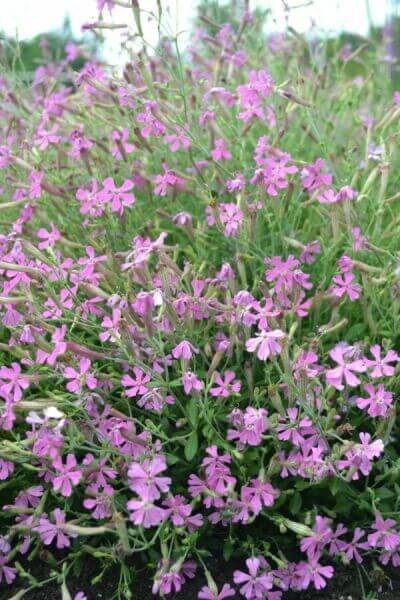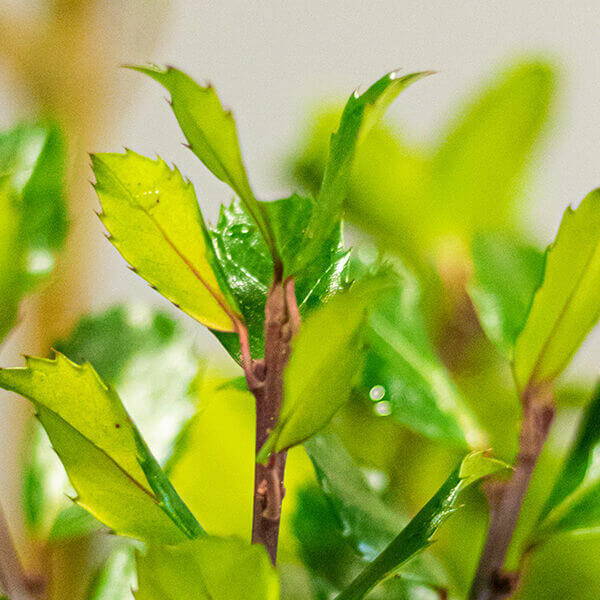Hardy Hedge Plants For Cold Climates
Hardy Hedge Plants For Cold Climates
Blog Article
Hedge Plants For Outdoor Layout
Enhance your garden's allure with rich hedge ranges such as Yew (Taxus), Thuja, Laurel, Photinia, and Bamboo, commemorated for their structural integrity and environmental benefits.
Yew and Thuja supply evergreen coverage and winter resilience, while Laurel offers quick development and broad, fragrant leaves.
Photinia adds seasonal beauty with its lively red foliage, and Bamboo lends a low-maintenance, serene atmosphere.
These hedges enhance air quality, minimize noise, and create tranquil, personal areas.
Proper planting, spacing, and upkeep make sure vigorous development and eco-friendly harmony.
Explore how these lavish varieties can raise your garden's charm and well-being.
Secret Takeaways
Change Your Garden With Lush Hedge Varieties
- Select Yew for its thick, evergreen development and exceptional longevity.
- Go with Laurel for its quick growth and broad leaves, making sure quick privacy.
- Select Photinia for its vibrant seasonal foliage, which turns a striking dark red.
- Make use of Bamboo for a low-maintenance, winter-hardy hedge with aesthetic appeal.
- Area plants 2-3 per meter and prune routinely for optimum growth and health.
Popular Hedge Plants
When changing a garden with rich hedge ranges, it's vital to think about popular hedge plants such as Yew, Thuja, Laurel, and Photinia due to their distinct attributes and benefits.
Yew (Taxus) is extremely esteemed for its durability and dense, green growth, making it a prime option for enduring landscapes.
Thuja is kept in mind for its evergreen foliage and robust winter season durability.
Photinia includes seasonal vibrancy with red leaves that darken over time, developing dynamic visual appeal.
Laurel provides quick growth and fragrant, broad leaves, perfect for fast privacy.
Furthermore, Bamboo is an excellent choice for atmosphere, using a low-maintenance, winter-hardy option that improves the garden's visual with its elegant, swaying walking sticks.
These selections deal with a variety of horticultural needs and preferences.
Advantages of Garden Hedges
Garden hedges use a wide range of advantages, making them an important addition to any landscape. These natural barriers are cost-efficient to implement and offer considerable wind defense, boosting air circulation and contributing to noise reduction. The dense foliage of hedges like Thuja and Beech makes sure personal privacy by obstructing presence, developing a serene and secluded environment.
Hedges also play an important function in microclimate guideline, supplying a steady environment that cultivates plant development and decreases temperature level variations. Their detailed leaf structures filter toxins, enhancing air quality and adding to a much healthier garden community.
Furthermore, hedges master noise reduction, absorbing and deflecting sound waves to lower ambient sound levels. This double performance of offering both acoustic and visual privacy enhances the overall tranquility and visual appeal of any garden.
Planting and Upkeep Tips
For a successful hedge, meticulous preparation of the planting location is vital. Guarantee the soil has appropriate pH and drainage to support strong root advancement.
Area the plants appropriately for the chosen types. Water the hedge often during its preliminary development phase, adjusting as required with seasonal changes.
Implement a organized insect control and disease avoidance technique, using organic or chemical treatments when required. Regularly check for aphids, mites, and fungal infections.
Apply mulch to maintain wetness and suppress weeds. Seasonal pruning promotes thick growth and air blood circulation, vital for plant health.
Following these guidelines will assist you cultivate a dynamic, well-maintained hedge that boosts the beauty of your garden.
Spacing and Cutting Guidelines
Spacing and Cutting Guidelines
Correct spacing and trimming are vital for cultivating healthy, visually appealing hedges. Sufficient spacing ensures each plant gets sufficient nutrients, light, and air flow.
Follow these guidelines for ideal hedge maintenance:
- Spacing: Position hedge plants 2-3 plants per meter to motivate robust development.
- Pruning Methods: Routine pruning is important for keeping desired hedge height and shape. Cut new growth in summer season and cut back older wood throughout winter season.
- Seasonal Care: Adjust cutting schedules and methods according to seasonal requirements to make sure plant health.
- Hedge Height: Regularly screen and cut to keep the desired hedge height and accomplish consistent visual appeals.
Following these actions will guarantee your hedge grows, enhancing both the appeal and functionality of your garden.
Selecting the Right Hedge
Picking the Right Hedge
Selecting the appropriate hedge involves assessing aspects such as fully grown height, foliage density, and ecological resilience. Successful hedge plant selection requires comprehending each types' development qualities and site-specific flexibility.
For instance, Yew (Taxus) uses excellent longevity and thick development, while Thuja is noteworthy for its winter season strength. In addition, thinking about upkeep requirements is vital; fast-growing types like Laurel or Privet need routine cutting, whereas low-maintenance alternatives like Bamboo or Ivy may be more effective for those looking for very little maintenance.
Environmental elements such as soil type, light accessibility, and moisture conditions ought to also guide the choice procedure. This careful method makes sure the selected hedges will prosper, offering both practical and aesthetic advantages to the garden landscape.
Shipment and Planting Suggestions
To guarantee your hedge plants grow, they must be provided by specialized couriers and planted immediately upon arrival.
Follow these vital actions for successful planting:
- Soil Preparation: Enrich the soil with raw material to enhance drain and nutrient content.
- Planting Depth: Create a trench two times the width and equivalent to the depth of the root ball.
- Watering Methods: Water thoroughly after planting, keeping the soil regularly damp but not saturated.
- Mulching: Use a layer of mulch to keep moisture and reduce weeds.
Client Support and Service
Offered the important role of prompt assistance in horticultural pursuits, our consumer assistance team is readily available six days a week through telephone, e-mail, and social media to offer skilled guidance and promptly attend to any concerns. Their commitment to fast reaction times makes sure client complete satisfaction by solving inquiries related to plant health, ideal planting approaches, and maintenance schedules.

Reaction Time
-------------------
Within 48 hours
This comprehensive support group, strengthened by an outstanding 9.3/ 10 customer ranking, highlights our dedication to boosting the gardening experience for each client.
Regularly Asked Questions
How Long Does It Consider Hedge Plants to Establish?
Hedge plants normally require one to 3 years to become totally established, with the specific duration differing by species and growing conditions.
Effective care during this critical duration is essential for robust development. Constant watering, watchful weed control, and proper fertilizer application are pivotal in promoting strong root advancement.
For instance, fast-growing species like Laurel might develop faster, while slower-growing ranges such as Yew may take longer. Diligent upkeep speeds up the establishment process, leading to thick and healthy hedges.
What Are the very best Hedge Plants for Personal Privacy?
The concern of the very best hedge plants for privacy includes examining evergreen and deciduous alternatives.
Evergreen hedges like Thuja, Laurel, and Cypress provide year-round coverage, guaranteeing constant personal privacy.
In contrast, deciduous hedges such as Beech offer seasonal privacy, shedding leaves in chillier months.
Secret upkeep pointers for personal privacy hedges consist of routine trimming, fertilizing in spring, and proper spacing-- generally 2 to 3 plants per meter.
Furthermore, consistent watering and persistent weed removal are crucial for promoting healthy, dense growth.
Can Hedge Plants Draw In Wildlife to My Garden?
Yes, hedge plants can draw in wildlife to your garden by offering important benefits like shelter, food, and nesting sites, thus enhancing local biodiversity. Yew, holly, and laurel are outstanding for attracting birds, while ivy supports a variety of pests.
Nevertheless, it's essential to note that there are some drawbacks, such as increased upkeep to handle bugs and routine maintenance. Thoroughly choosing and maintaining hedge varieties can assist balance these disadvantages and advantages, ultimately promoting a lively and sustainable environment in your garden.
Are There Any Flowering Hedge Plants Available?
Yes, there are flowering hedge plants readily available that can enhance the charm of your garden.
For instance, Elaeagnus, also called Olive Willow, produces aromatic white flowers in the fall, adding a touch of beauty.
Photinia, another popular option, showcases vibrant red leaves that develop into an abundant green, creating a dynamic visual result throughout the seasons.
To guarantee these plants prosper, it's important to practice appropriate pruning methods and seasonal upkeep, such as cutting new growth in the summertime and cutting down in the winter season.
These procedures will assist maintain the health and aesthetic appeal of your flowering hedges.
How Do I Prevent Pests in My Hedge Plants?
To avoid pests in hedge plants, employ natural pest control methods and preserve appropriate hedge care. Introduce useful bugs like ladybugs, which take advantage of hazardous insects, to produce a well balanced community.
Routinely examine your hedges for signs of infestation and immediately get rid of any afflicted parts to avoid the spread. Guarantee the health of your hedges by using balanced fertilizers and offering appropriate water.
Use mulching to keep soil moisture and appropriate spacing to decrease plant stress and promote robust development. These practices jointly assist in lessening insect problems and keeping a healthy hedge.
Conclusion
In essence, selecting the best hedge varieties such as Yew, Thuja, and Laurel can change any Additional reading garden into a relaxing haven. These plants provide year-round plant, boost aesthetic appeal, and offer useful benefits like noise reduction and wind defense.
Appropriate planting techniques, precise spacing, consistent watering, and seasonal trimming are crucial for ideal growth.
Dependable delivery services and skilled client assistance guarantee a seamless experience from purchase to planting, making it easier than ever to elevate your outside space.
Garden hedges use a wide variety of benefits, making them an important addition to any landscape. These natural barriers are affordable to carry out and offer significant wind security, improving air circulation and contributing to sound reduction. The dense foliage of hedges like Thuja and Beech makes sure privacy by blocking exposure, creating a secluded and serene environment.

Pruning Strategies: Routine pruning is necessary for preserving desired hedge height and shape. Cut brand-new growth in summer season and cut back older wood during winter season.
Report this page